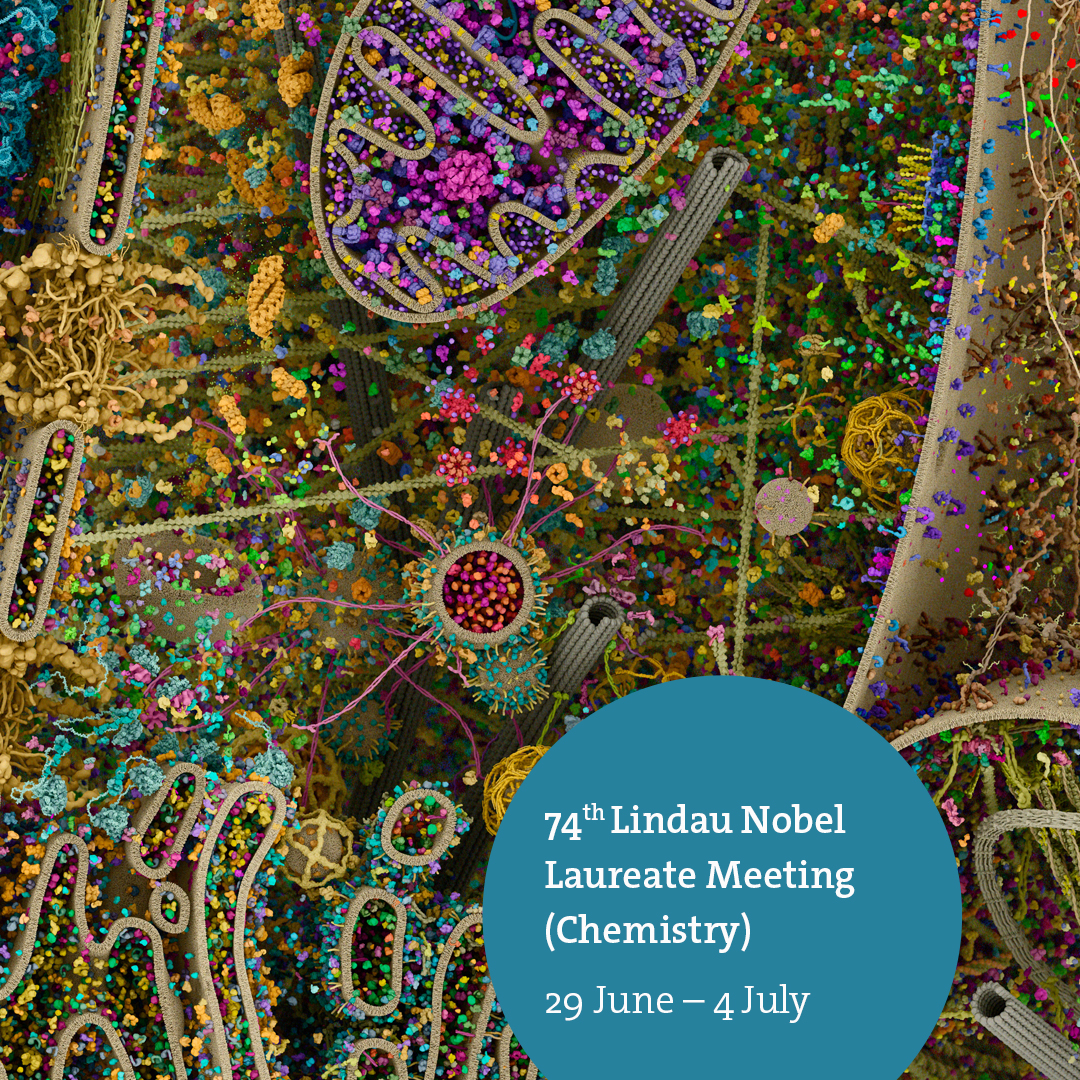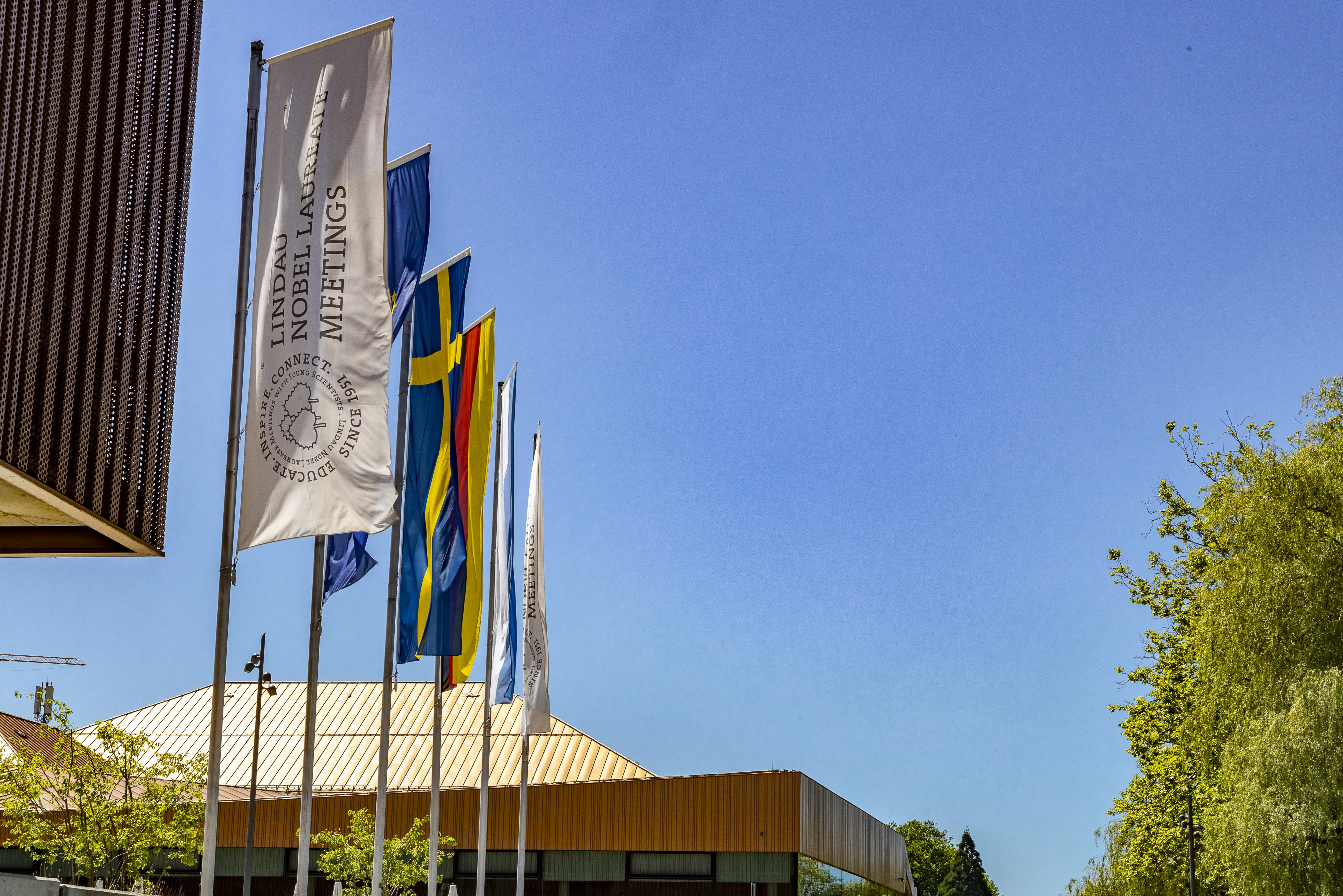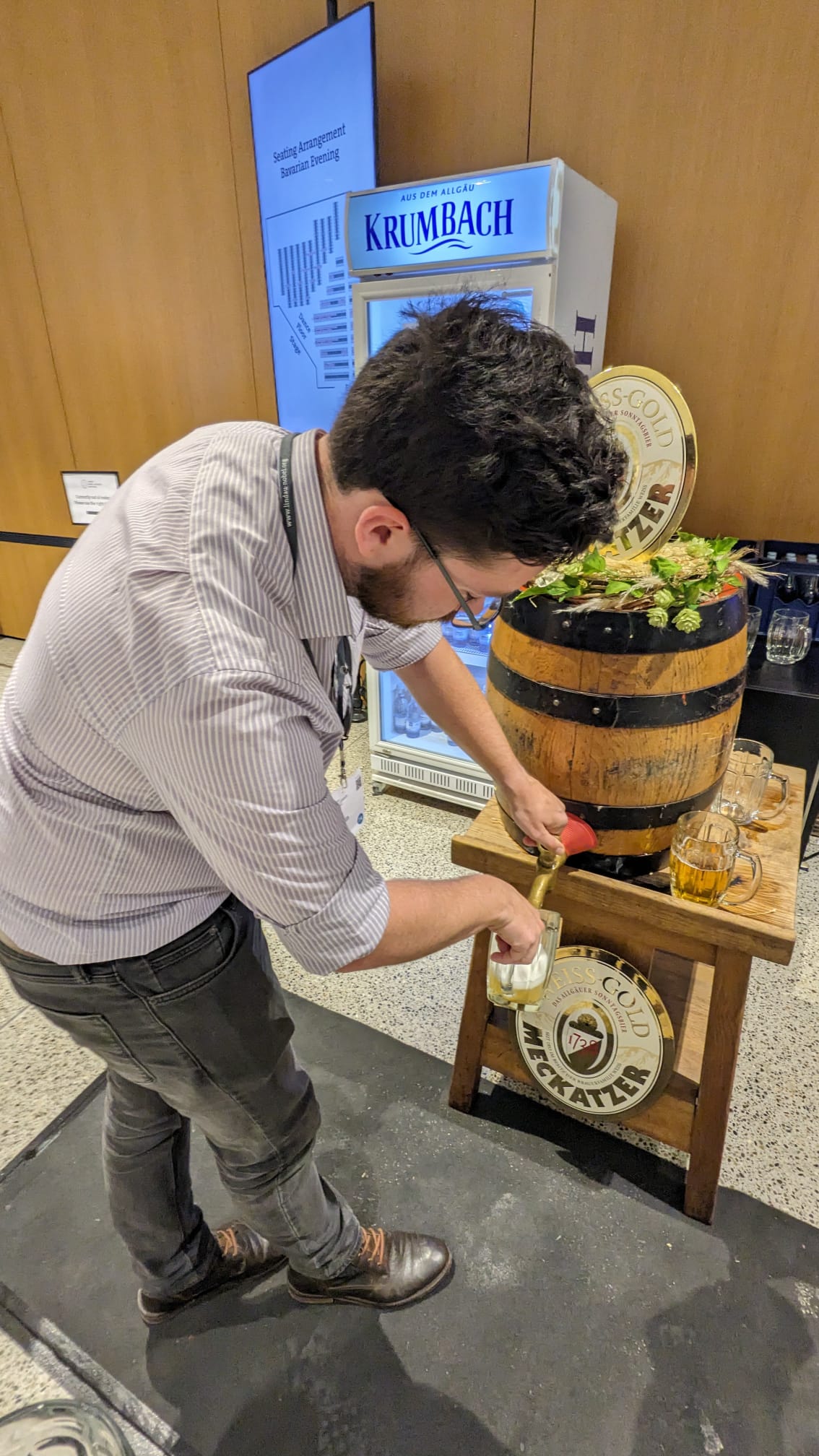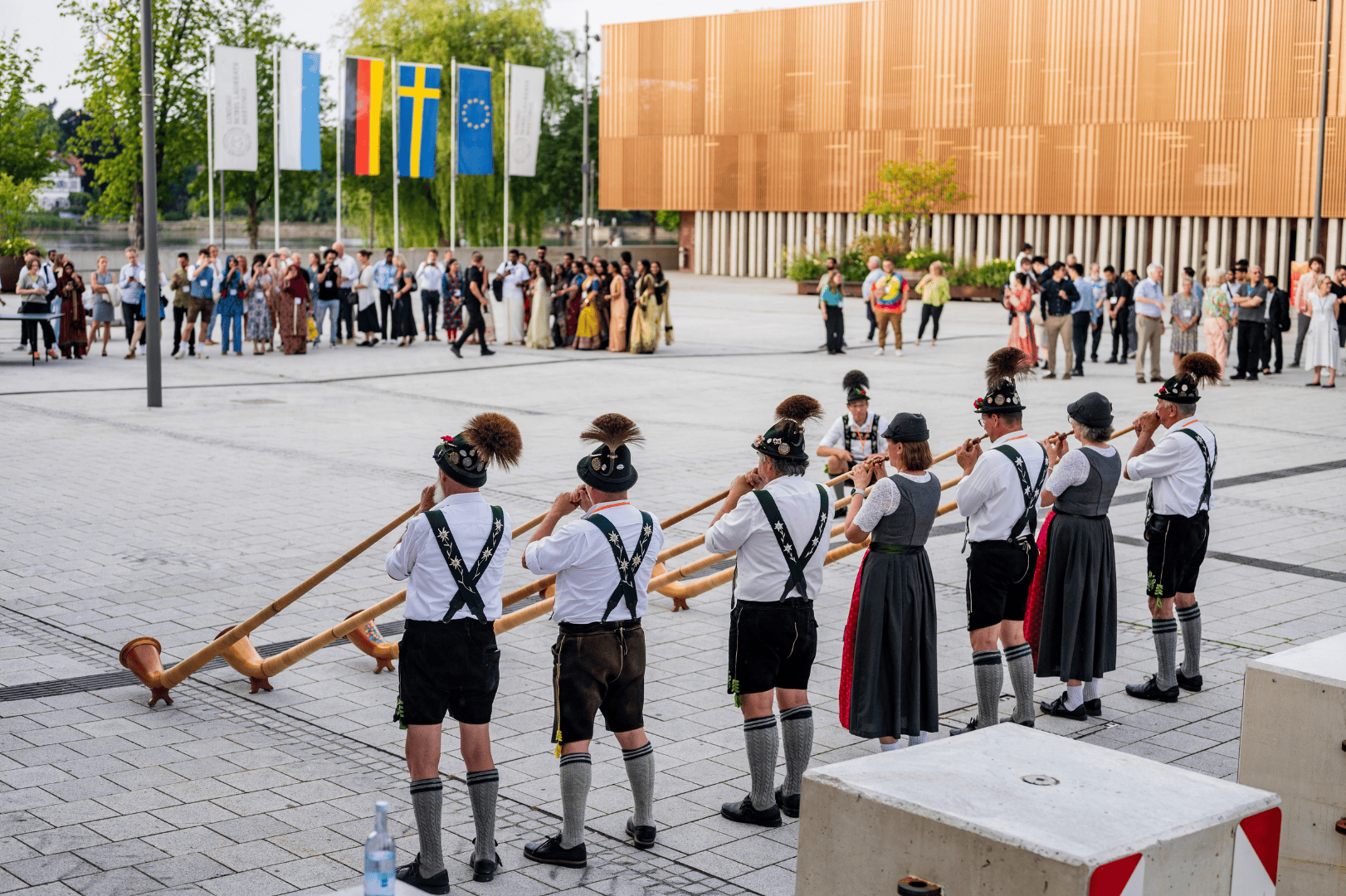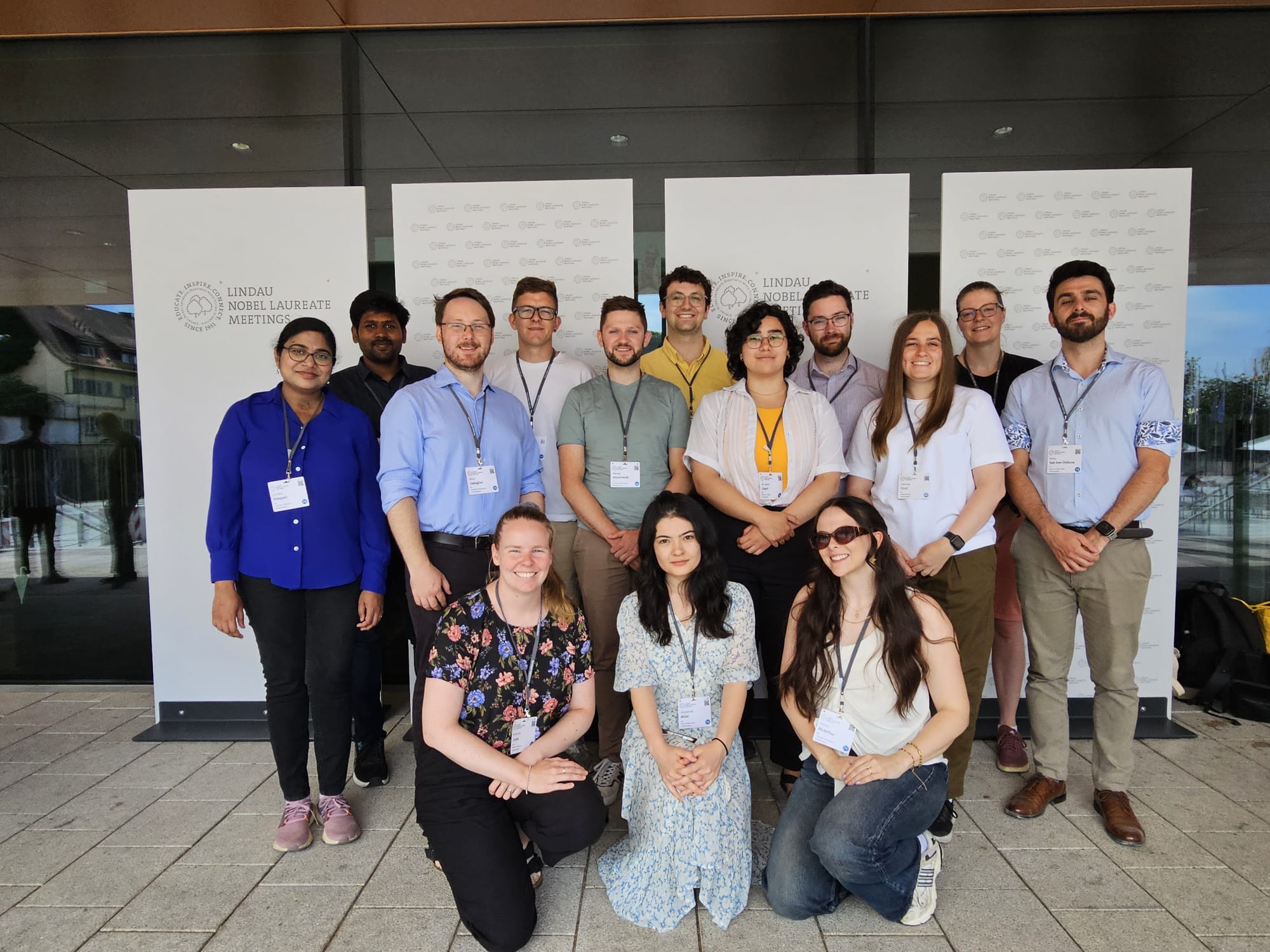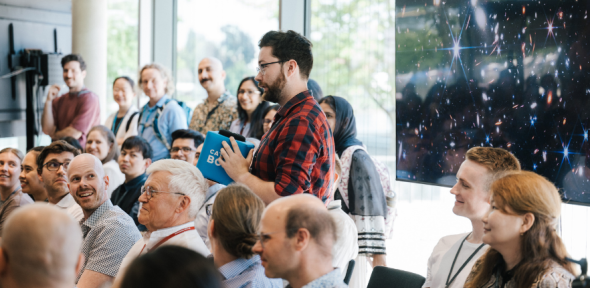
Submitted by Rachel Fellows on Wed, 20/08/2025 - 14:59
David O'Loughlin, a PhD student in the MacFarlane Lab went to the prestigious Lindau Nobel Laureate meeting in Germany which this year focused on chemistry. David tells us about the meeting and how he found the experience:
Attending a Lindau Nobel Laureate Meeting
by David O'Loughlin
In March, I received an incredible email: after a months-long, multi-stage selection process, I had been chosen as one of 600 early-career scientists globally to attend the Lindau Nobel Laureate Meeting in Chemistry on Lindau Island, Bavaria.
The meeting is held annually, rotating through the scientific disciplines recognised by the Nobel Prize, providing unique opportunities for young scientists, postgraduates, and postdoctoral researchers to engage in discussions with 30 to 40 Nobel Laureates. Now in their 74th year, the meetings are hosted by the Countess Bettina Bernadotte af Wisborg, the eldest daughter of Count Lennart Bernadotte, who was approached by physics Laureates Franz Karl Hein and Gustav Wilhelm Parade to set up a conference for Laureates and young scientists in their native Germany.
The meetings have various formats, from large plenary lectures to small town-hall “Agora” talks and personal open discussions, where small groups can ask Nobel Laureates any questions they may have.
Day one opened with a panel discussion on the consequences of the Nobel Prize and how it has changed the lives of those who receive it. The Nobel is a unique award, and many Laureates have since changed their research interests away from those that won them the prize many years later. For some Laureates, what they had discovered was only the start of the story, the initial spark that inspired other scientists to continue the work—this is why Nobel Prizes are often shared between up to three scientists.
In the 1970s, English chemist Stanley Whittingham used lithium as the electron donor (anode) for the first time in a battery, but it took John Goodenough in the 1980s, and Akira Yoshino in 1985, before the functional lithium-ion battery we know today was created. Their work was recognised in the 2019 Nobel Prize in Chemistry for the development of the Lithium Ion Battery that so much of our modern society relies on.
In other cases, it’s because the Laureates’ curiosity and that of their group members take their research into new and exciting directions.
The opening panel was followed by a plenary lecture from Dr, John Jumper, one of the youngest and most recent Laureates, winning in 2024 for his work on AlphaFold for protein structure prediction. Dr Jumper spoke about the development story of AlphaFold, the importance of understanding protein structure and the importance of using both experimental techniques alongside computational methods. His lecture is available to view on the Lindau Website alongside many other talks and discussions from this and previous meetings.
The event was supported by the German and Austrian federal governments, as well as the state governments of Bavaria and Baden-Württemberg. We were also introduced to traditional Bavarian hospitality, including music, dance, and a keg tapping ceremony, which suited my skills better than the dancing!
The week finished with a boat trip to Mainau Island, where a panel of experts discussed the role of Science Diplomacy, which is particularly important given the current science and funding landscape!
A highlight of the meeting for me was the Open Discussion with Scottish chemist Prof. Sir David MacMillan, who won the Nobel Prize in 2021 for the development of asymmetric organocatalysis (these are small organic molecules which can match and even beat enzymes at their ability to catalyse reactions in organic chemistry), and shares the award with Prof. Benjamin List. Prof. MacMillan shared some insights into his career journey, into ways to impress a potential future supervisor, on the academic landscape and, of course, Scotch Whisky. I also had the opportunity to have lunch with Prof. Sir John Walker from the MRC Mitochondrial Biology Unit here in Cambridge. This was an incredible opportunity for ten young scientists to chat with a world expert in an informal setting, overlooking the beautiful Lindau harbour.
Often, as scientists, we focus on talking about why our scientific discoveries matter within our own realm, why the techniques we have used are groundbreaking or explaining the niche mechanism we have unravelled. The Lindau meeting was an opportunity for some of the world’s most impressive scientists to talk through the implications of their discoveries, the real-world applications and consequences, which really resonated with me. These concepts and ideas are ones that I will take forward and apply to my own research, which is about understanding the impact that tyres have on our environment and involves working with dozens of stakeholders across the industry.
I am truly grateful for the opportunity to attend and to hear from so many inspirational Nobel Laureates, guests, and fellow young scientists. I’d like to extend my heartfelt thanks to the MRC Toxicology Unit, the University of Cambridge, and the Royal Society for nominating me to attend this remarkable event.


